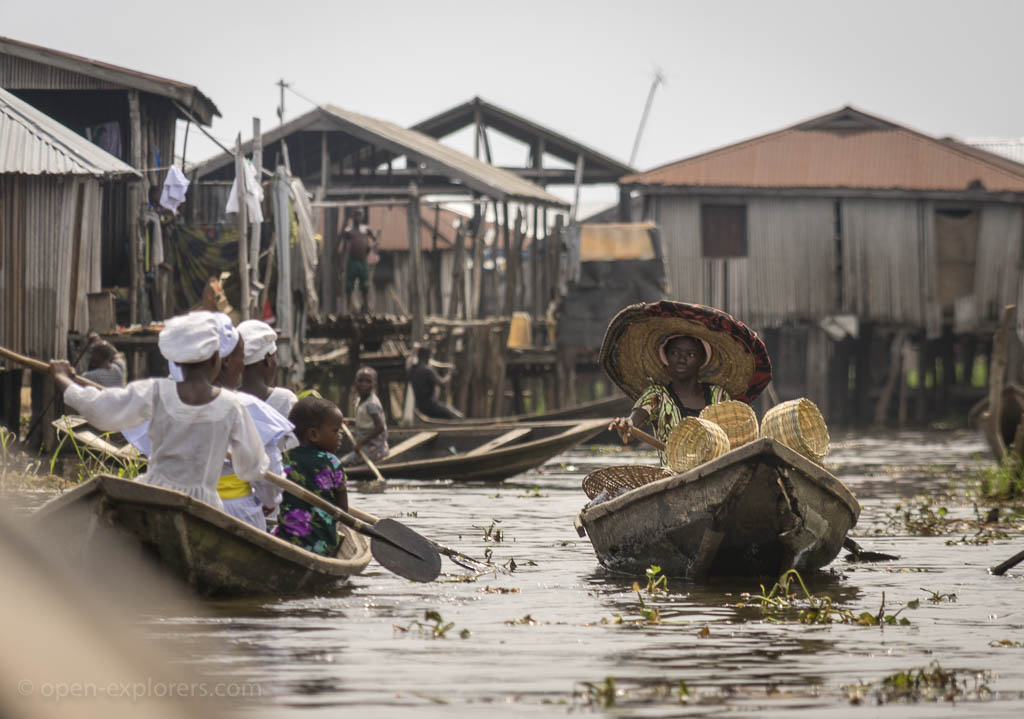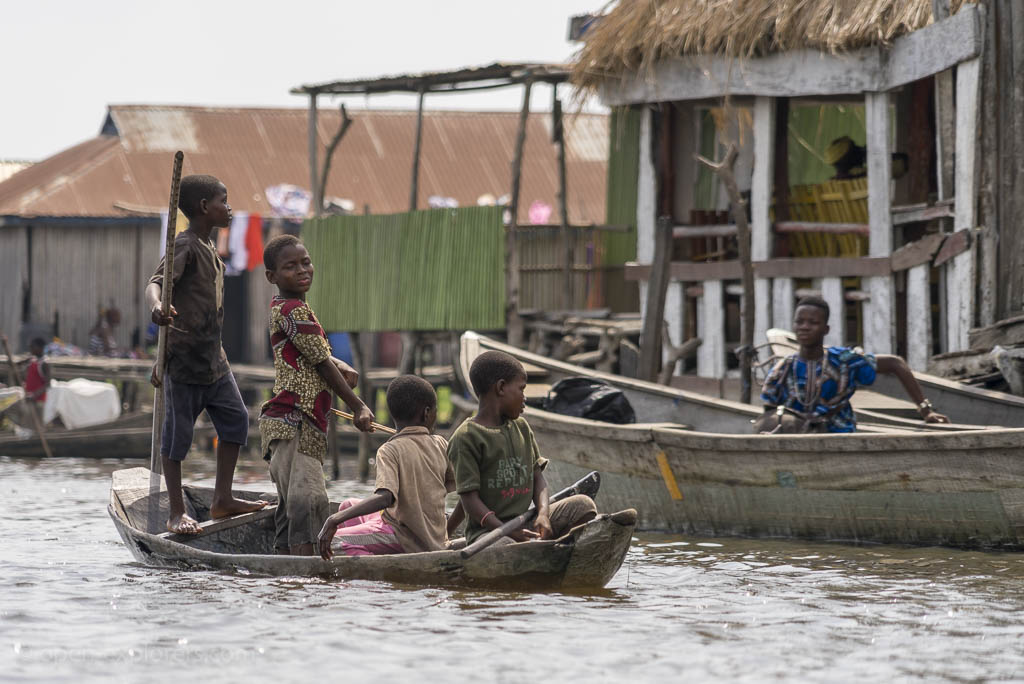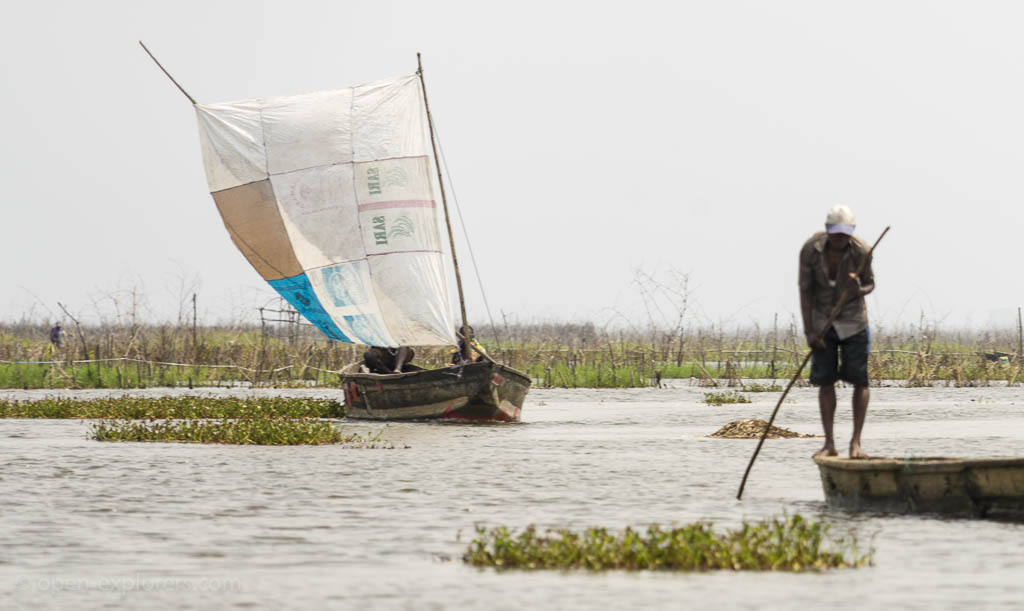Day 1023-1028 - Life afloat
Thanks to a friend of Toyin we managed to cross the unbearably chaotic, busy and confusing border between Nigeria and Benin in only one and a half hours, without any incidents or bribes. From there it was only a stone’s throw to Cotonou. Though the official capital of Benin is Porto Novo, Cotonou is much bigger and by far more important politically and enconomically. Thus it was our first port of call to once again sort out some of the visas we’ll need for the upcoming countries. You might remember that we tried to obtain the ghanaian visa in Brazzaville (Kongo) and were kindly referred to Tina in Benin. In the past years Ghana is constantly raising the bar for visa requirements and by now the rule is, that they can be obtained exclusively in ones homecountry. Obviously Tina wasn’t too excited about our request, but with a lot of persistence and Daniels charme we eventually managed to convice her to rule in our favor.
Benin is the first country in a long while that is a bit more touristy. Many of the Europeans we see in the streets or on the beaches are actually here for pleasure and not for business or on behalf of an aid- or development organisation. This reflects in a more developed touristic infrastructure in form of cosy hostels and nice bars and restaurants with a wide variety of dishes on offer, ranging from italian pizza to thai food. Good time to indulge in some culinary treats.
At the Nokoué lagoon, that limits the sprawling of Cotonou to the north, we visited a rather peculiar village by the name of Ganvié. The whole place sits atop stilts and is home to about 20.000 individuals of the Tofinu people. At a population this large it should probably be a city but the settlement really couldn’t feel more rural than it does. Ganvié came into existence in the 17th century, by sheer necessity.
At the time the Dahomey kingdom (1600-1894) ruled over the territory of modern-day Benin and it was one of the most powerful and influencial kingdoms in all of West Africa. The Dahomey people had good, long-standing trade relations with the Europeans who brought them firearms, textiles and alcohol in exchange for slaves, that were shipped to the colonies in North and South America and the Caribbean. Dahomey soldiers regularly engaged in warfare with neighboring kingdoms where captives were enslaved and later sold.
The relatively small and consequently vulnerable Tofinu tribe found salvation from the warriors at the Nokoué lagoon because the Dahomeys religious belief system forbade them to go into or onto water. The name Ganvié means „the collectivity of those who found peace at last“ and against the villages historic background couldn’t be more fitting.
Joey
Tag 1023-1028 - Leben auf dem Wasser
Dank eines Freundes von Toyin haben wir die absolut chaotische, geschäftige und unübersichtliche Grenze zwischen Nigeria und Benin in nur anderthalb Stunden ohne Zwischenfälle und Schmiergeldzahlungen passiert und von dort war es nur noch ein Katzensprung nach Cotonou. Die offizielle Hauptstadt Benins ist zwar Porto Novo, von weitaus größerer politischer und wirtschaftlicher Bedeutung ist dennoch Cotonou. Demzufolge auch für uns erste Anlaufstelle um mal wieder ein paar Visas zu organisieren. Ihr erinnert euch vielleicht, daß wir in der Ghanaischen Botschaft in Brazzaville (Kongo) an Tina weiterempfohlen worden sind. Ghana macht es Reisenden in den letzten Jahren wirklich nicht einfach und mittlerweile gibt es eine Vorschrift, daß Visas ausschließlich im Heimatland ausgestellt werden. Auch Tina war von unserem Anliegen nicht sonderlich begeistert, aber mit viel Geduld und Daniels Charme konnten wir sie dann doch noch zu unseren Gunsten umstimmen.
Benin ist seit langem das erste Land wo es wieder ein klein wenig touristischer ist. Viele der Europäer die man in den Straßen und an den Stränden des Landes sieht sind tatsächlich zum Urlaub machen hier und nicht geschäftlich oder im Auftrag von Hilfs- oder Entwicklungsorganisationen. Die touristische Infrastruktur ist dementsprechend auch schon etwas ausgeprägter, das heißt es gibt ein paar nette Hostels und gemütliche Restaurants mit einem breiten Angebot von italienischer Pizza bis Thai food. Da haben wir uns kulinarisch mal wieder richtig verwöhnen können.
In der Nokoué Lagune die das ausufernde Stadtgebiet Cotonous im Norden begrenzt, befindet sich das ungewöhnliche Dorf Ganvié. Komplett auf Stelzen errichtet ist es Heimat von etwa 20.000 Menschen die der Tofinu Ethnie angehören. Bei der Bevölkerungsgröße müßte man eigentlich von einer Stadt sprechen, aber dörflicher könnte sich die Siedlung wirklich nicht anfühlen. Ganvié ist im 17. Jahrhundert aus der Not heraus entstanden.
Damals herrschte in der Gegend des heutigen Benin das Dahomey Königreich (1600-1894), eines der bedeutensten und einflußreichsten in Westafrika. Die Dahomey Könige pflegten gute Handelsbeziehungen zu den Europäern, die im Austausch für Waffen, Textilien und Alkohol Sklaven einkauften um sie in die Kolonien nach Nord- und Südamerika und in die Karibik zu bringen. Die Soldaten des Dahomey Königreichs zogen regelmäßig in den Krieg gegen benachbarte Reiche und Kriegsgefangene wurden versklavt und verkauft.
Der relativ kleine und daher sehr schutzlose Stamm der Tofinu fand in der Nokoué Lagune ihre Rettung vor den Kriegern, denn das religiöse Glaubenssystem der Dahomey verbot es ihnen ins oder auf’s Wasser zu gehen. Der Name Ganvié, der soviel bedeutet wie „Das Kollektiv, derer die am Ende Frieden gefunden haben“ scheint vor diesem Hintergrund mehr als passen.
Joey
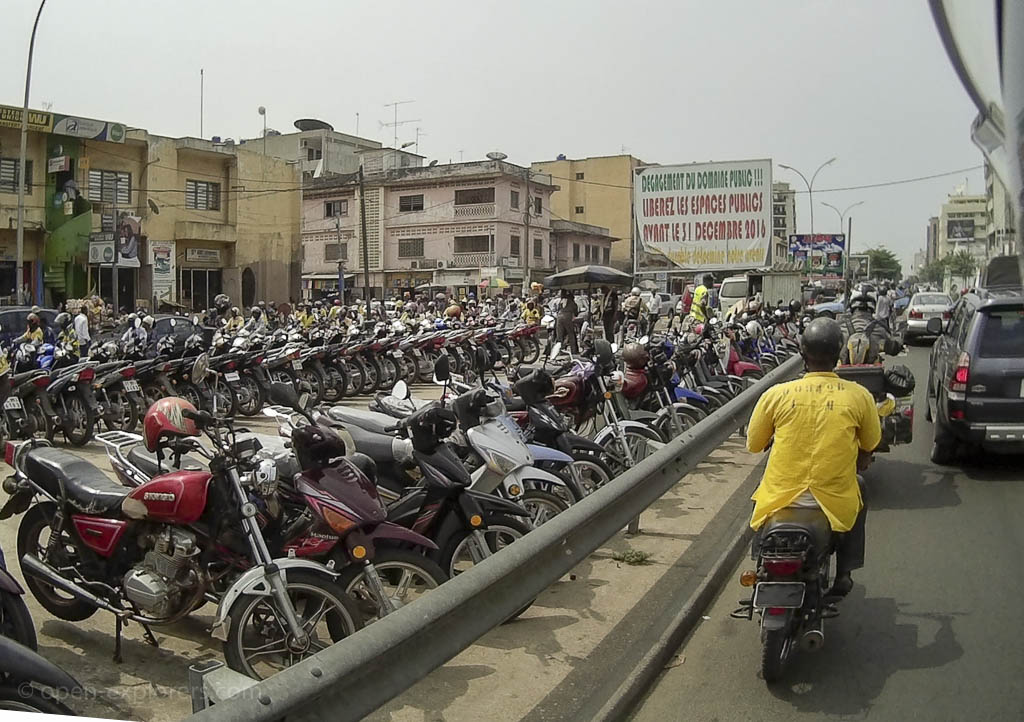
Benin is definitely a motorcycle country. Bikes are everywhere and widely used as moto-taxis, so-called zems. Since we're regularly part of the hectic traffic and know how crazy zems drive, we haven't yet dared to take one of them for inner-city transportation, though they're quite convenient.
Benin ist definitiv ein Motorradland. Überall sieht man Bikes und sie werden auch weitverbreitet als Moto-Taxis benutzt, die sogenannten Zems. Da wir ja regelmäßig an dem hektischen Verkehr teilnehmen und wissen, wie verrückt die Zem-Fahrer fahren, haben wir uns bisher allerdings noch nicht getraut so ein Moto-Taxi zu benutzen, auch wenn sie sehr praktisch sind.
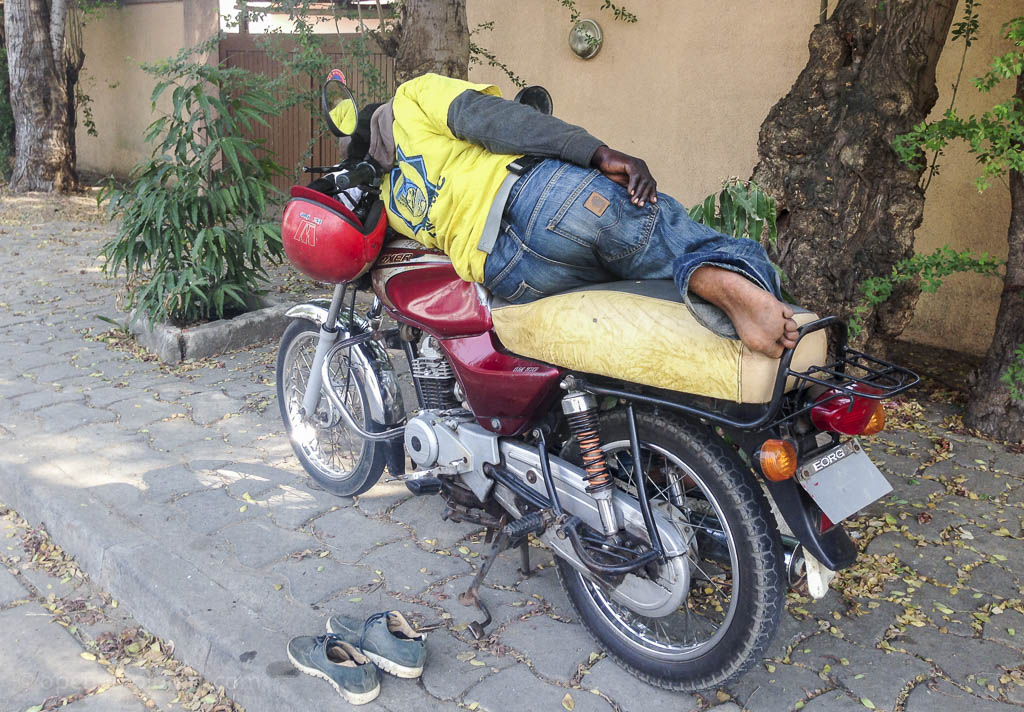
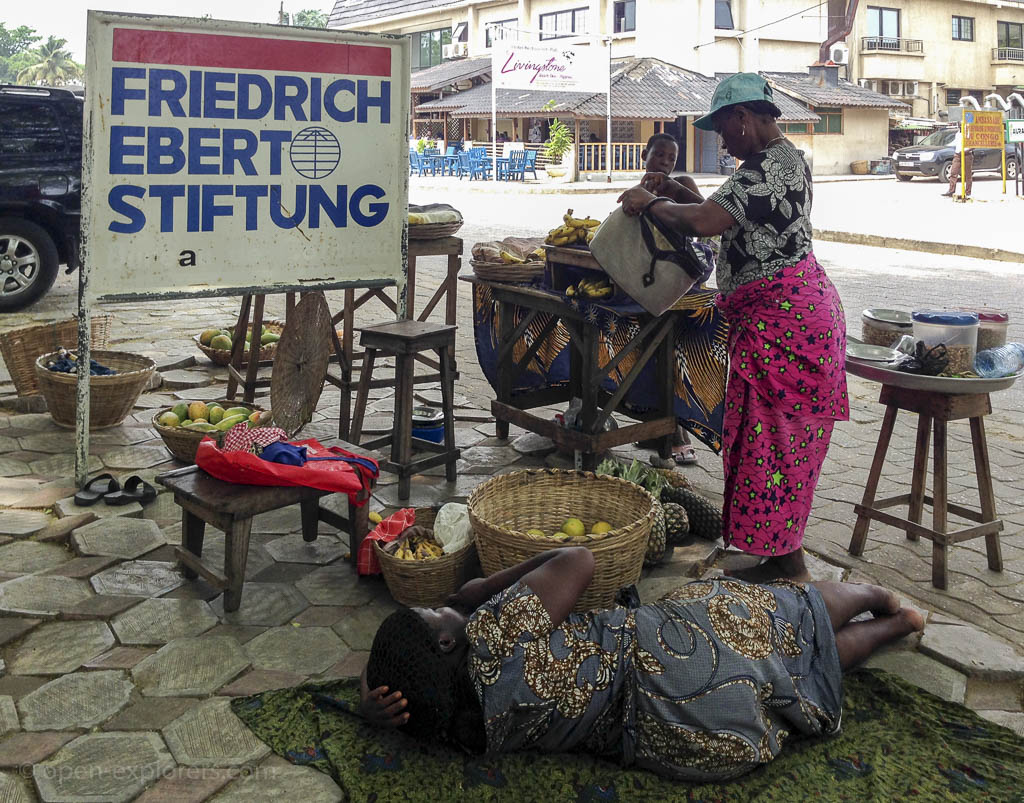
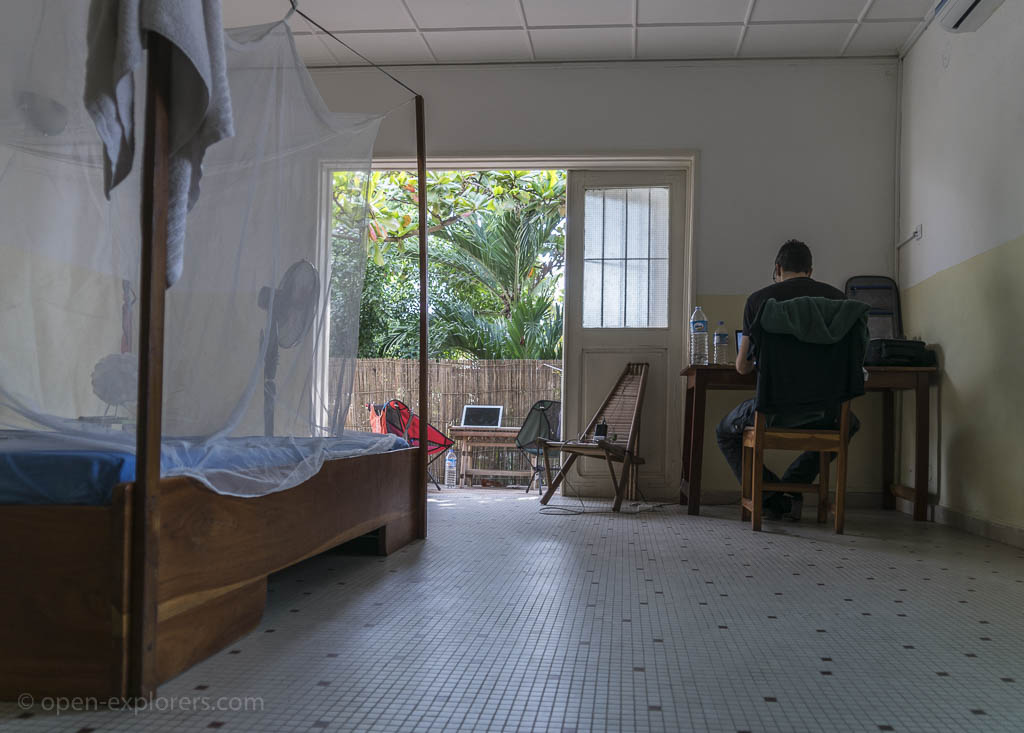
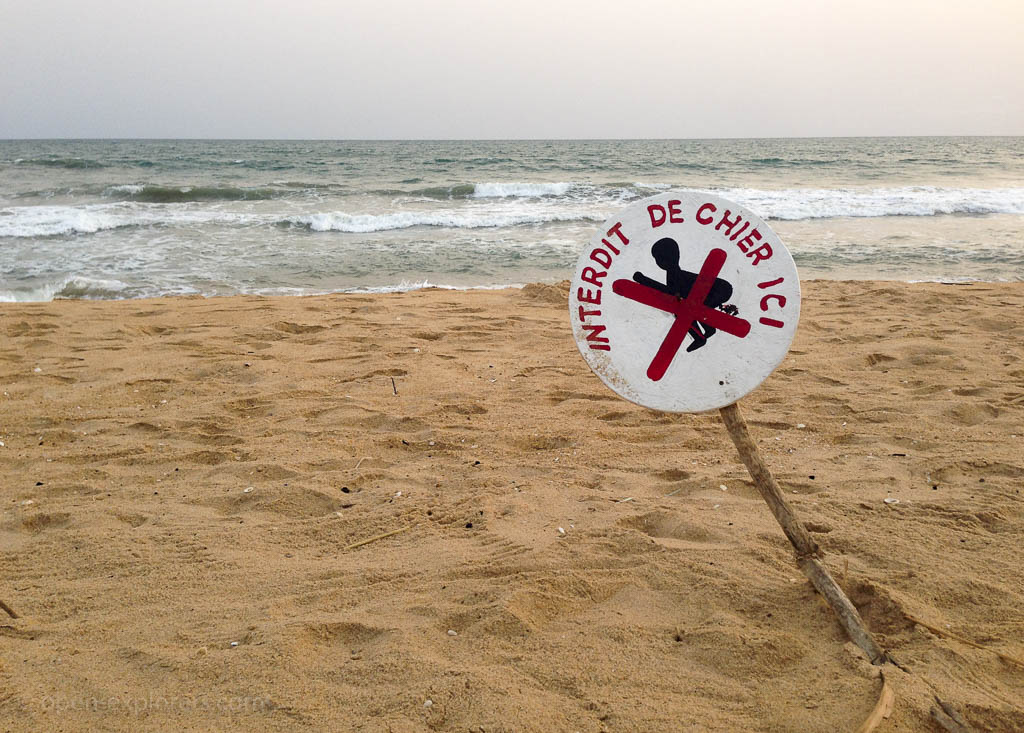
Just before taking the photo, we actually saw someone using the beach as a toilet.
Kurz bevor wir das Foto gemacht haben, haben wir tatsächlich jemanden gesehen, der den Strand zum Klo gemacht hat.
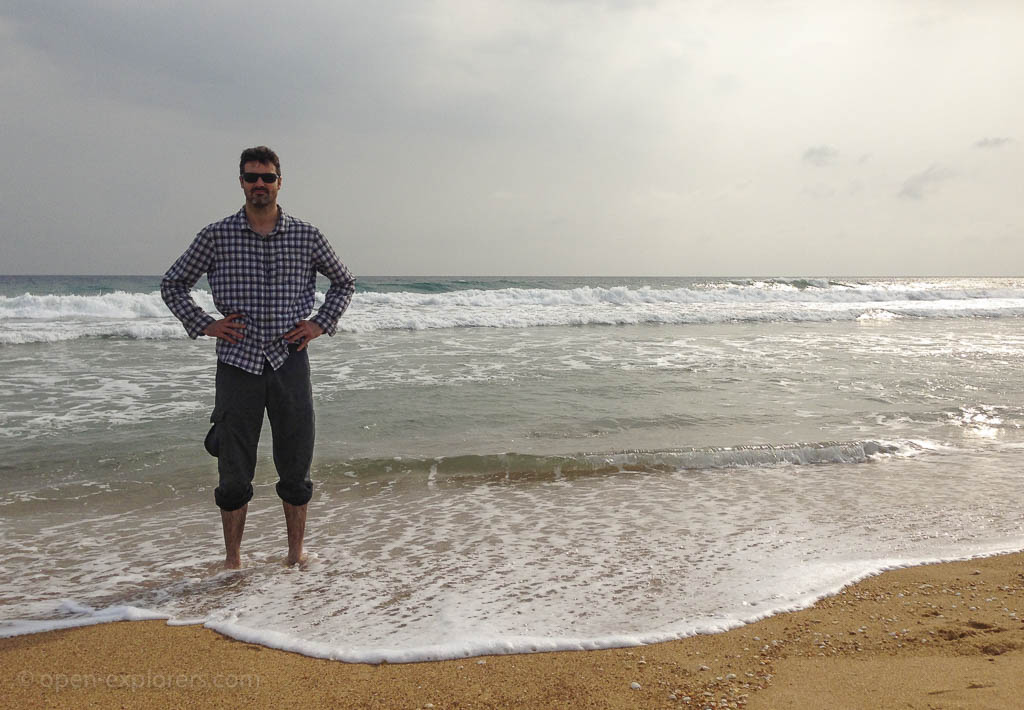
First beach since Angola!
Der erste Strand seit Angola!

In Ganvié life evolves around water, boats and fishing. The men and boys fish with nets and traps and the women sell the catch at the market.
In Ganvié dreht sich das Leben hauptsächlich ums Wasser, Boote und den Fischfang. Die Männer und Jungs fangen die Fische mit Netzen und Fallen und die Frauen verkaufen sie dann auf dem Markt.
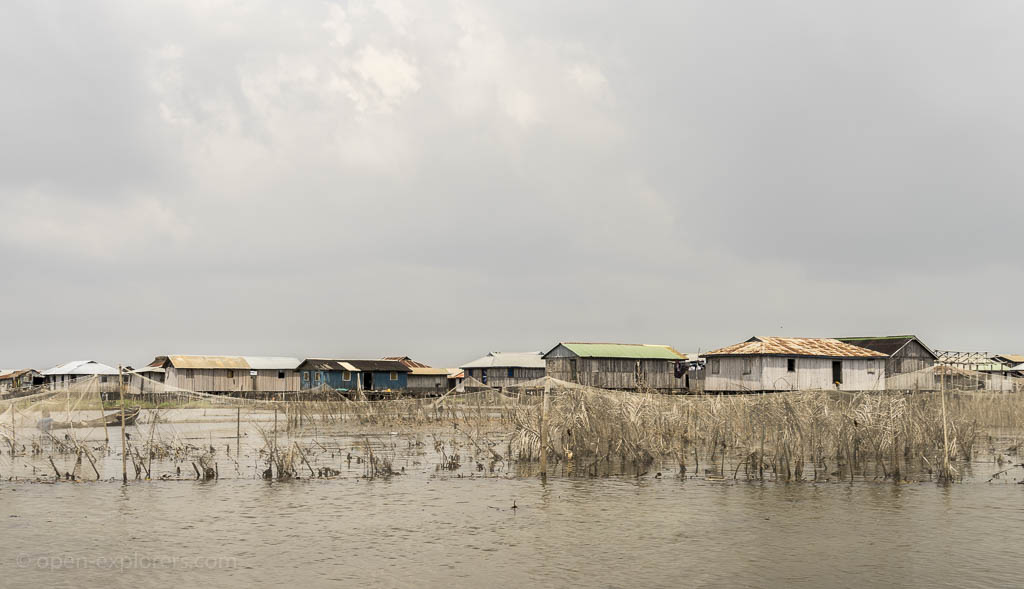
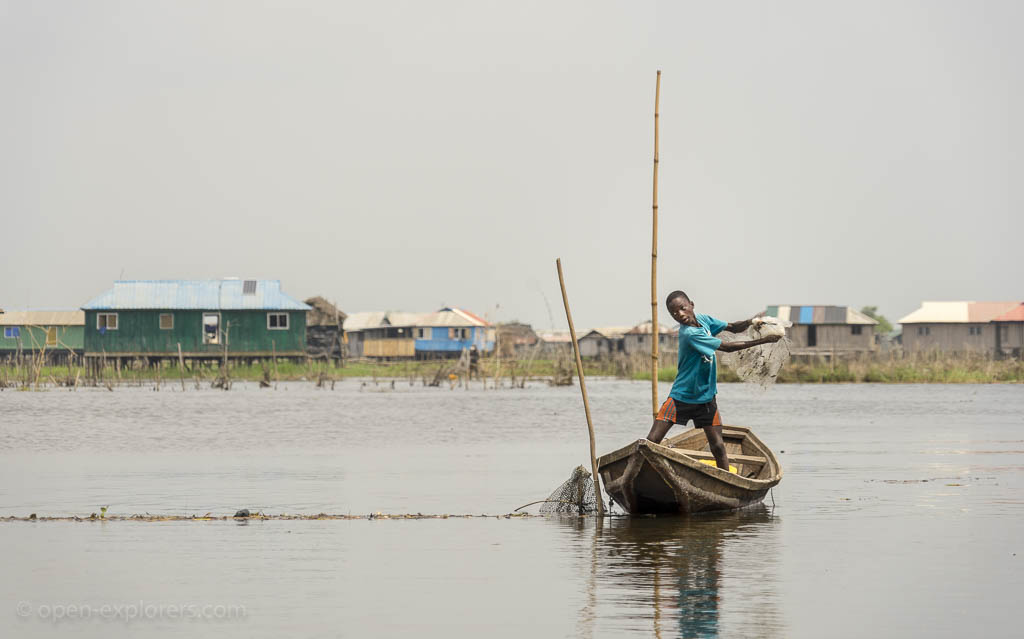
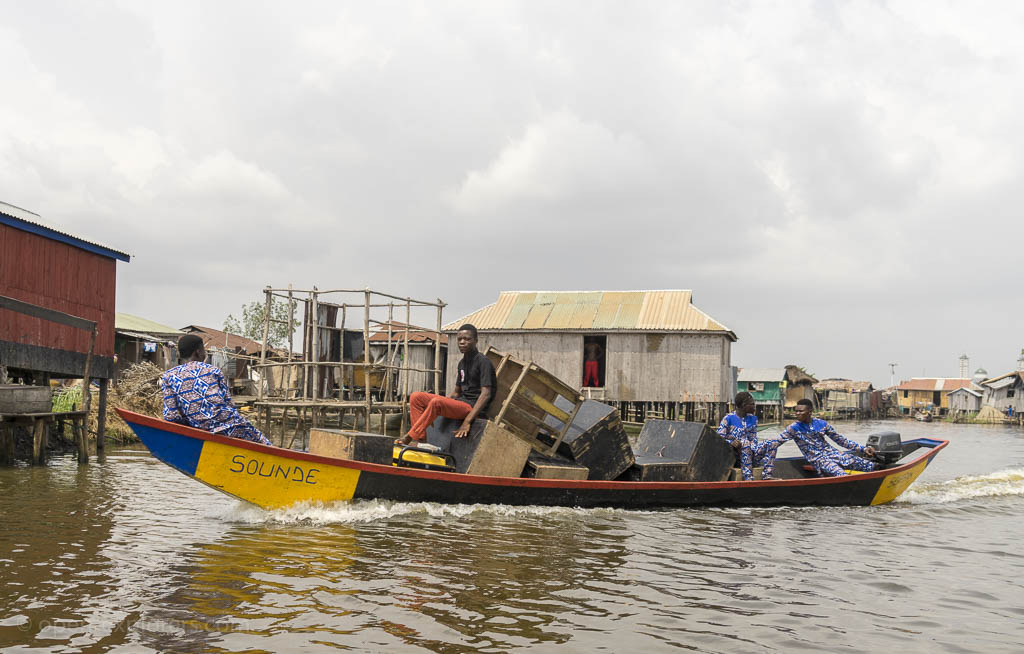
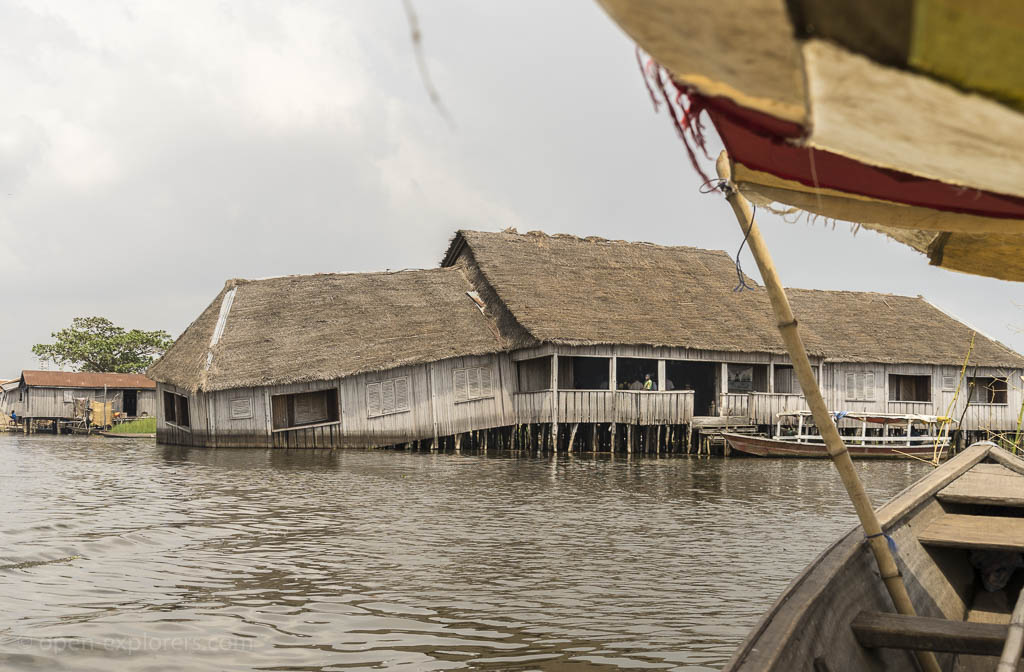
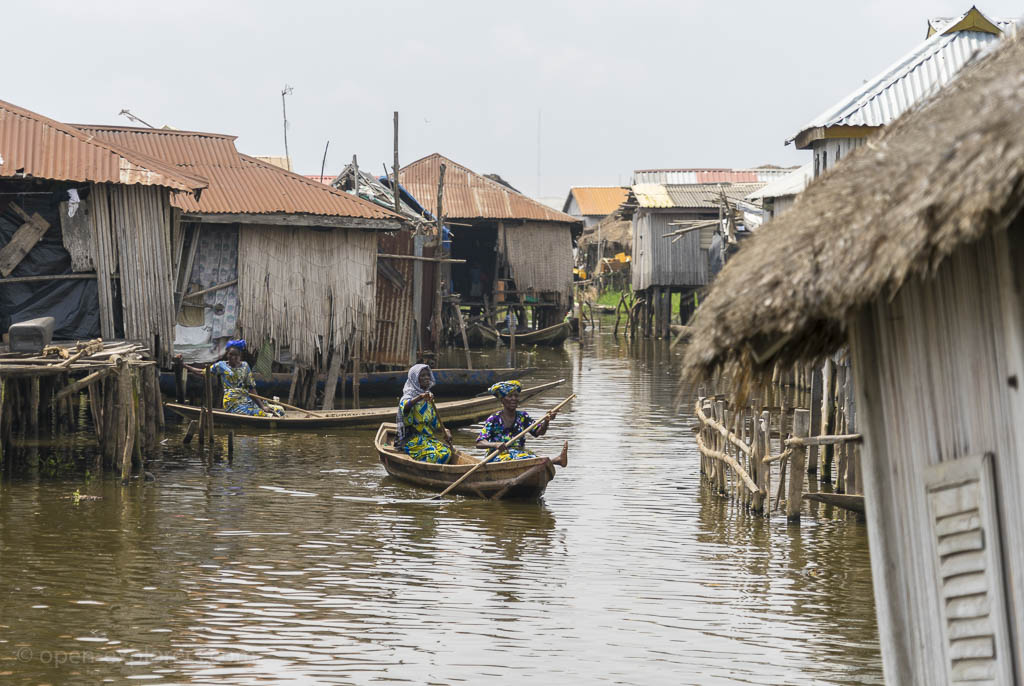
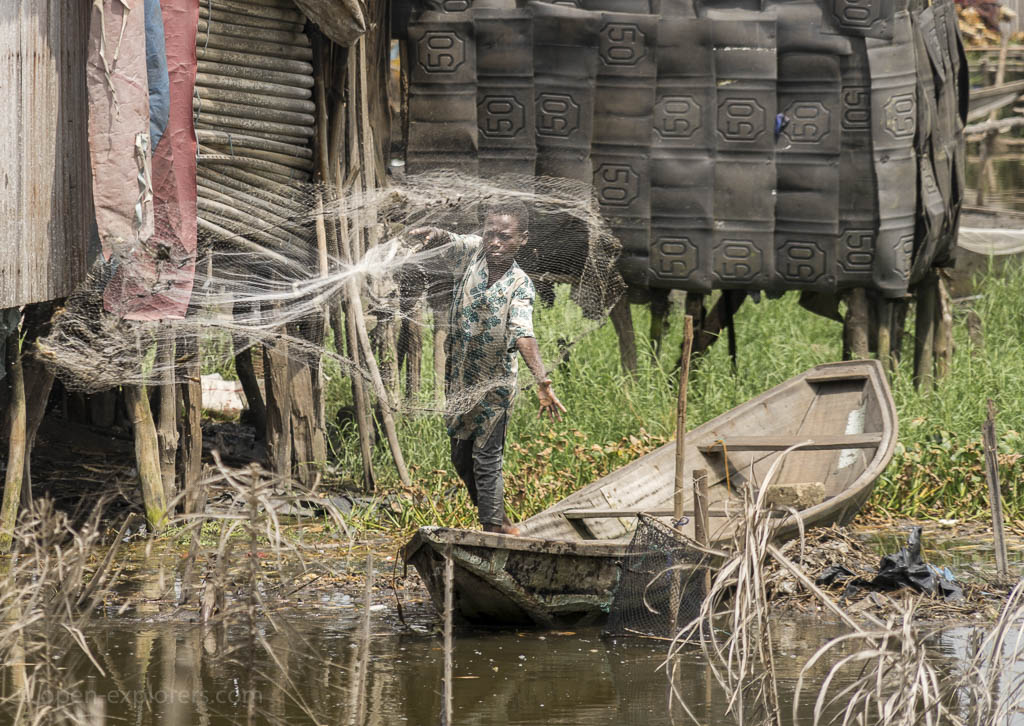
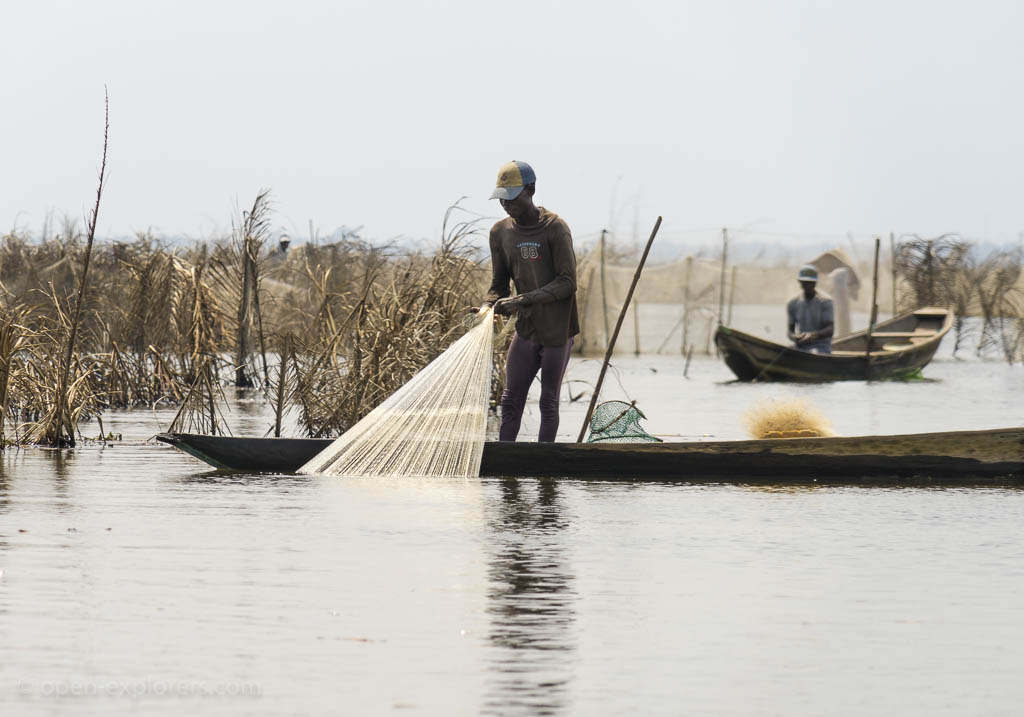
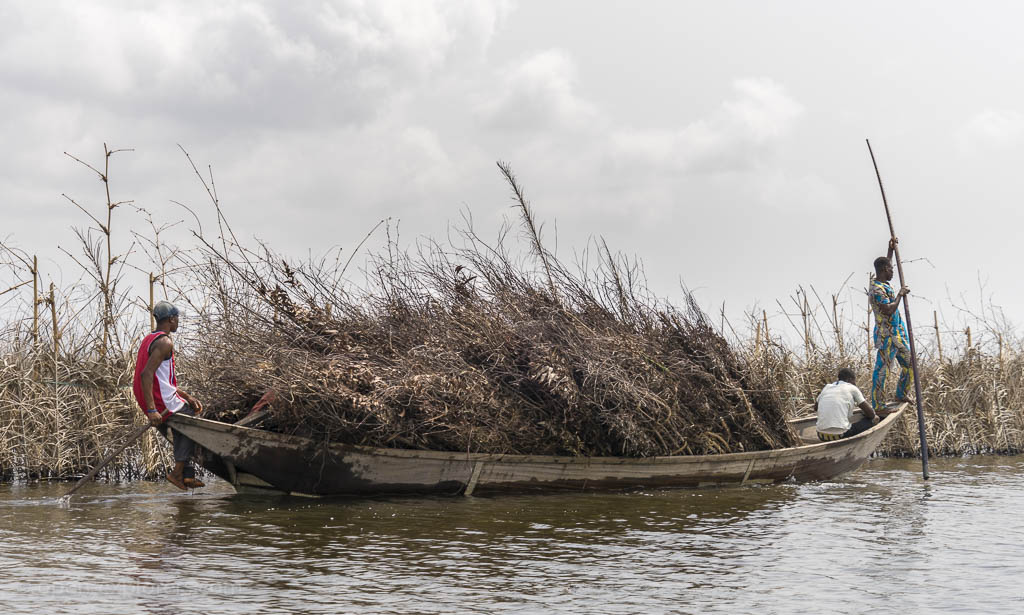
The fishermen stick dried palm fronds into the shallow water where it starts to rot and atract the fish who feed on the decaying plant material.
Die Fischer stecken getrocknete Palmwedel in das flache Wasser, wo sie dann beginnen zu verotten. Die Fische werden von dem verfaulenden Pflanzenmaterial angezogen, das ihnen als Nahrung dient.
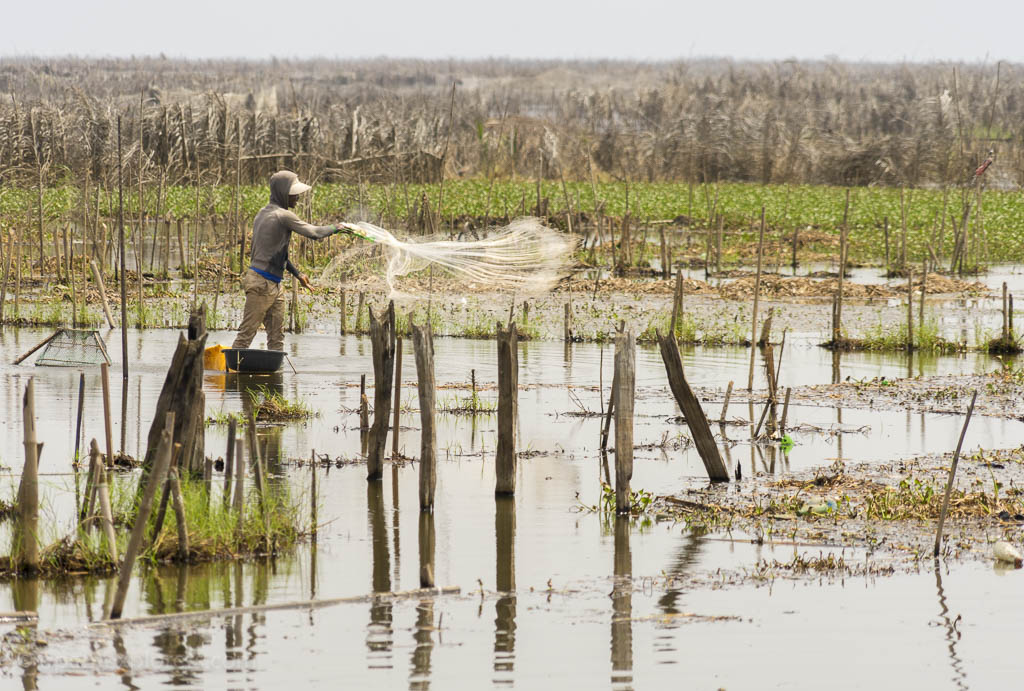
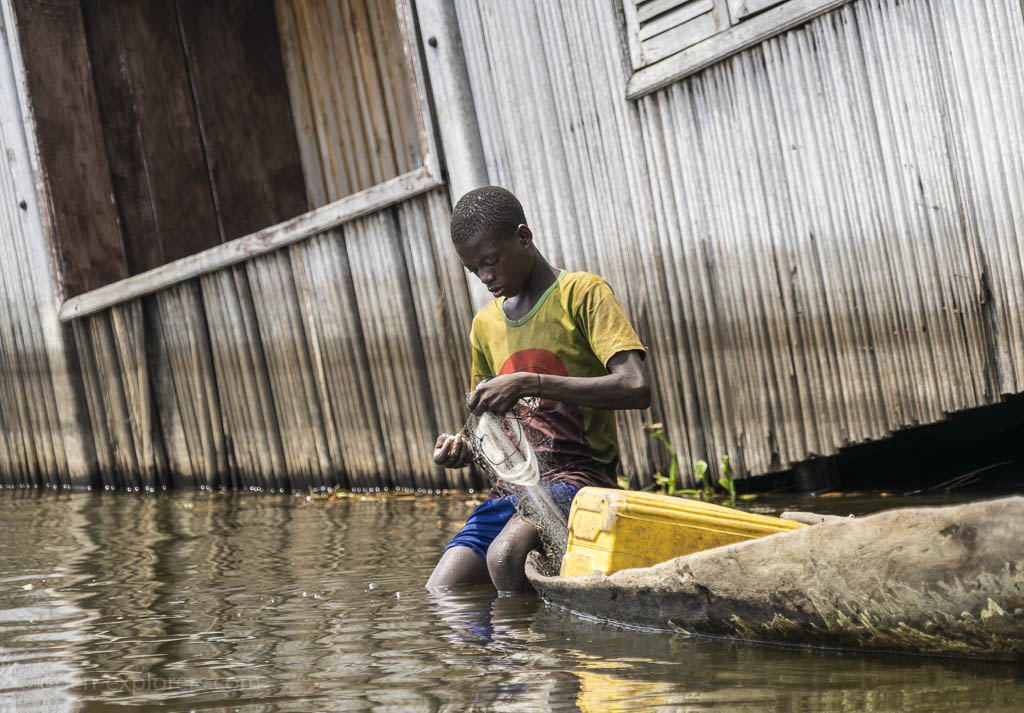
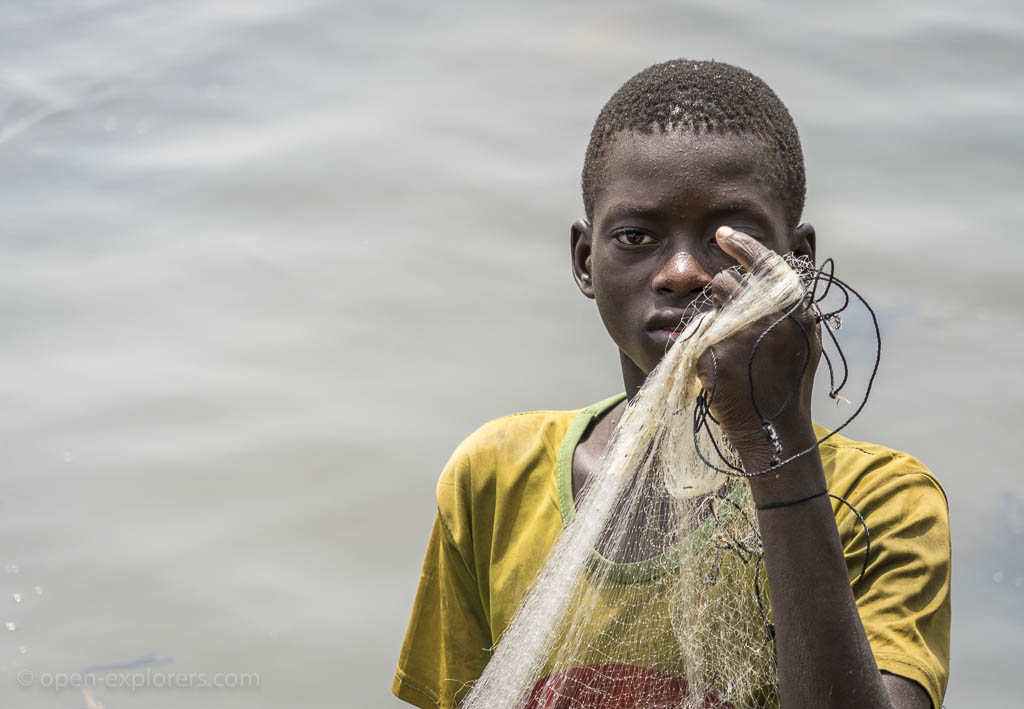

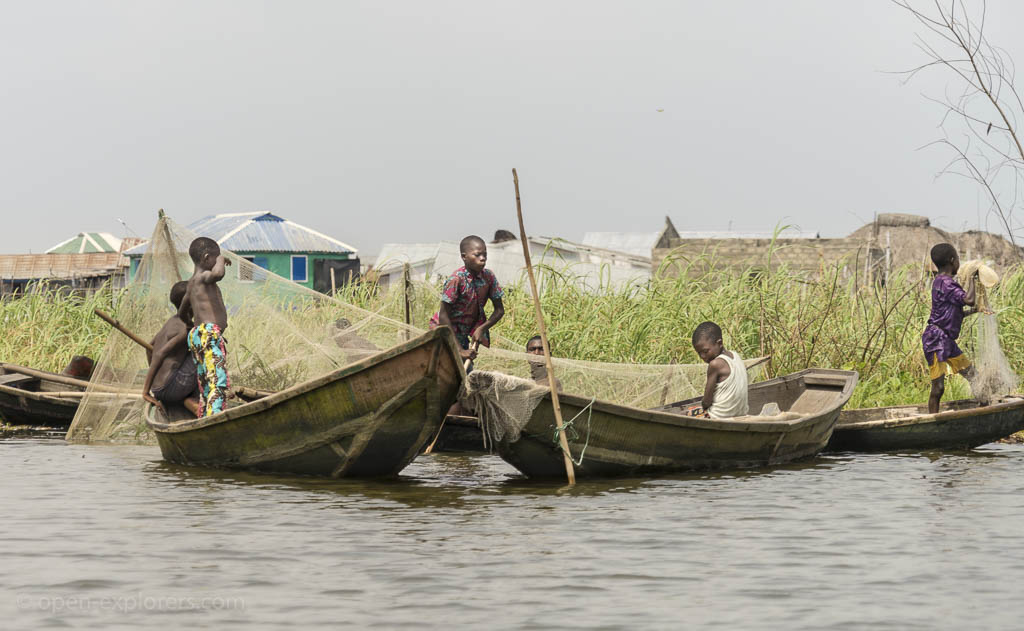
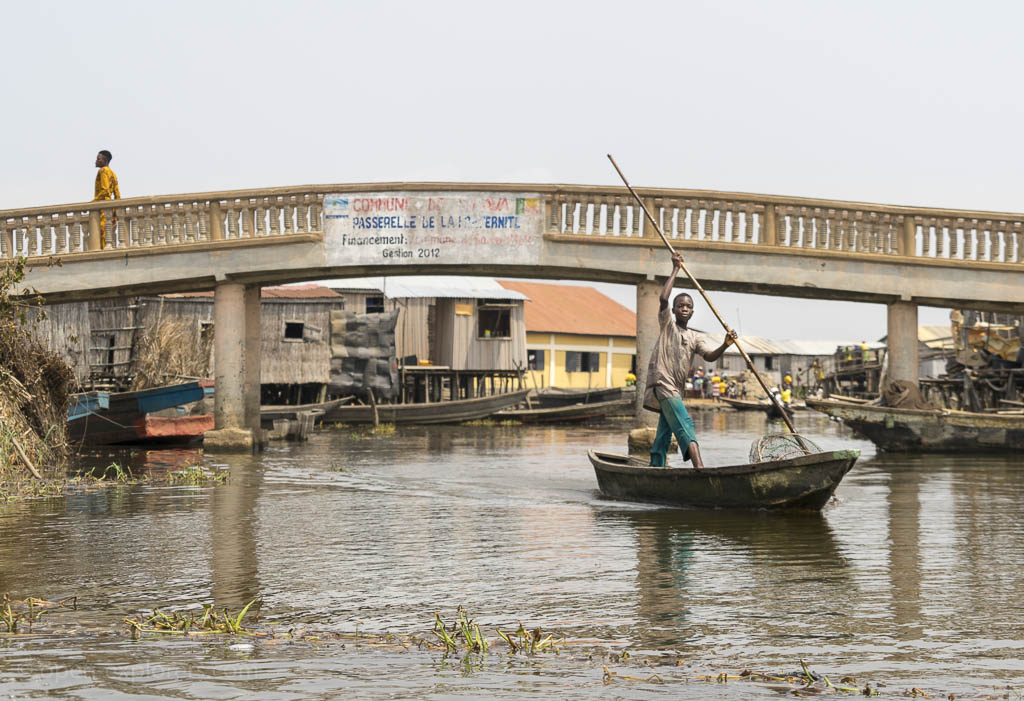
We also visited "Sô-Tchanhoue Xwe" one of the neighboring stilt villages, where some parts of the settlement actually sit on small islands.
Wir haben auch "Sô-Tchanhoue Xwe", ein benachbartes Stelzendorf besucht, wo Teile der Siedlung sich auf kleinen Inseln befinden.
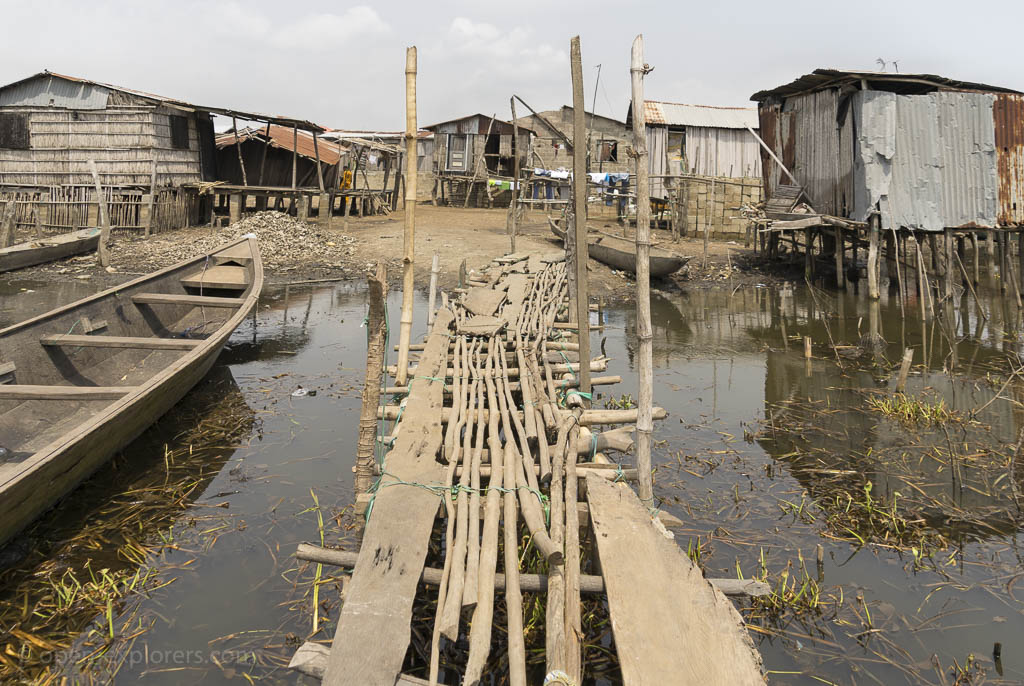
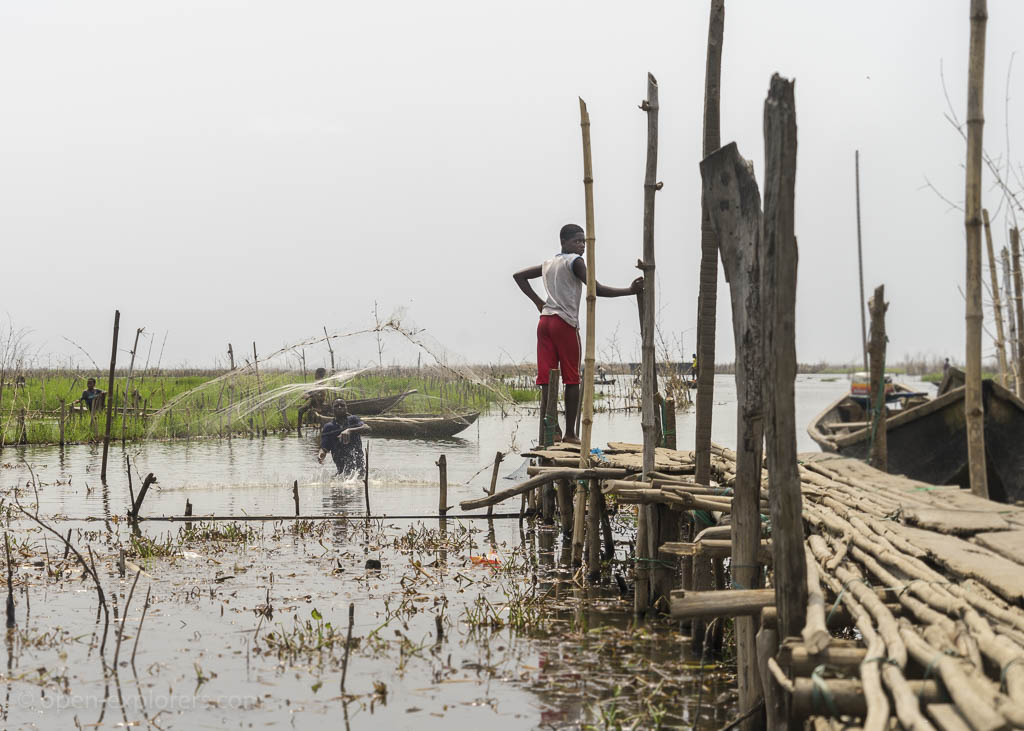
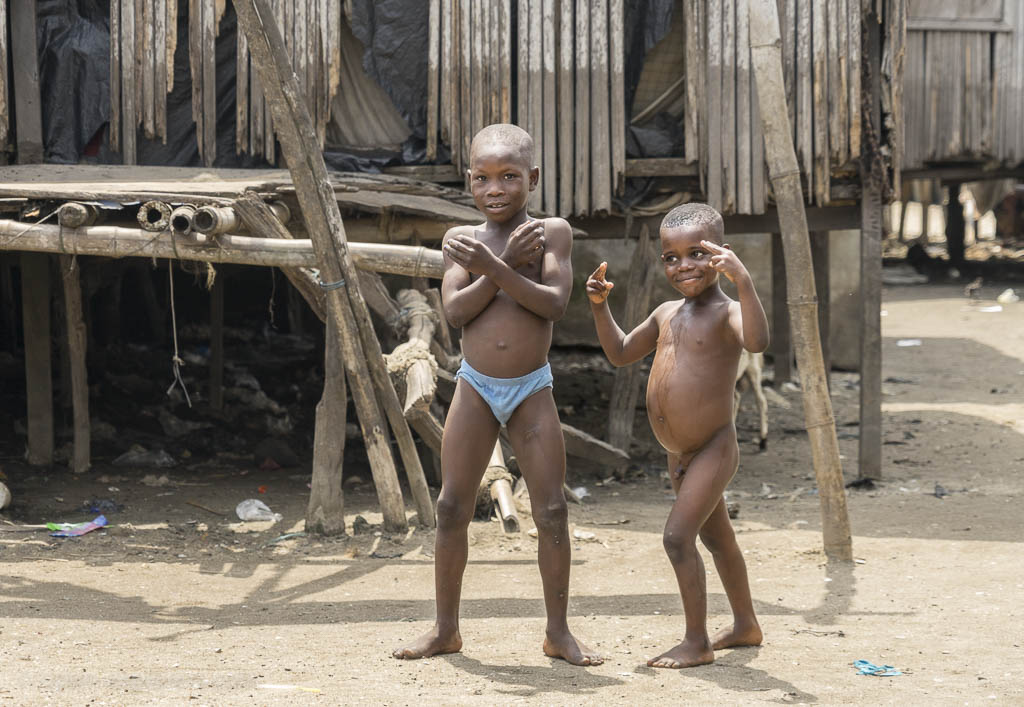
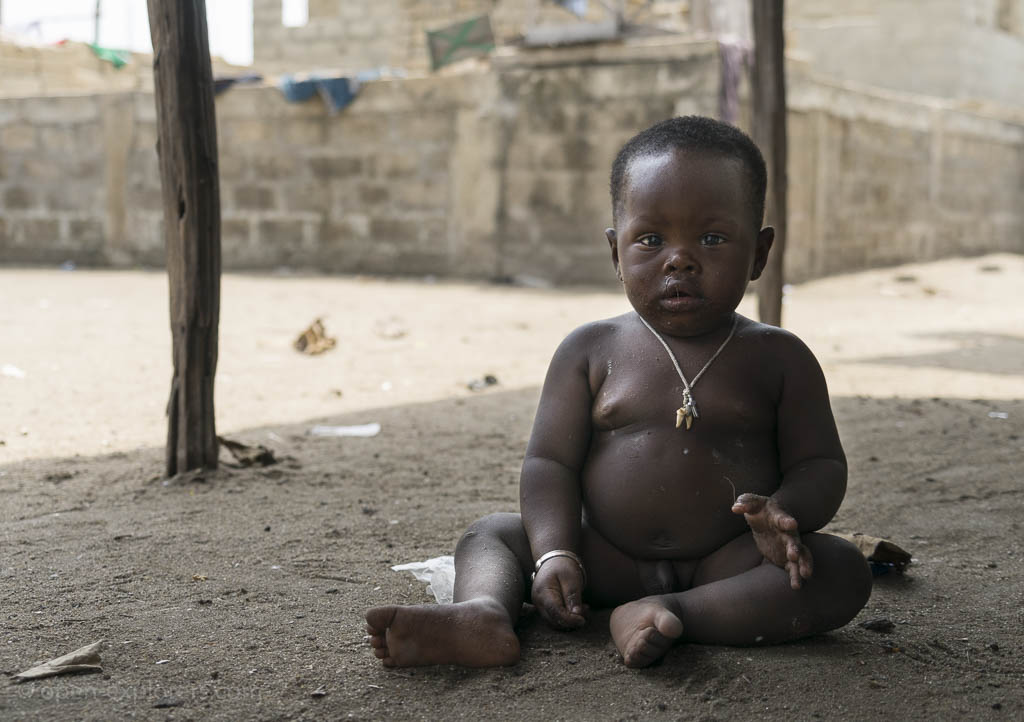
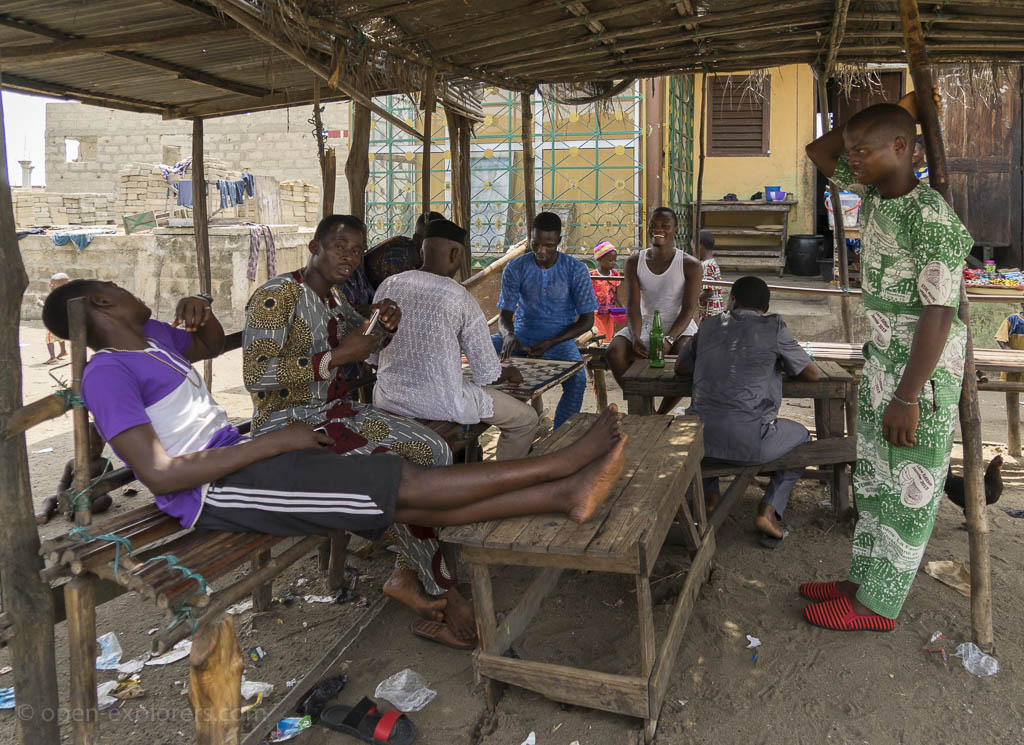
A relaxed sunday afternoon playing chess in "Sô-Tchanhoue Xwe"
Ein entspannter Sonntagnachmittag beim Schach in "Sô-Tchanhoue Xwe"
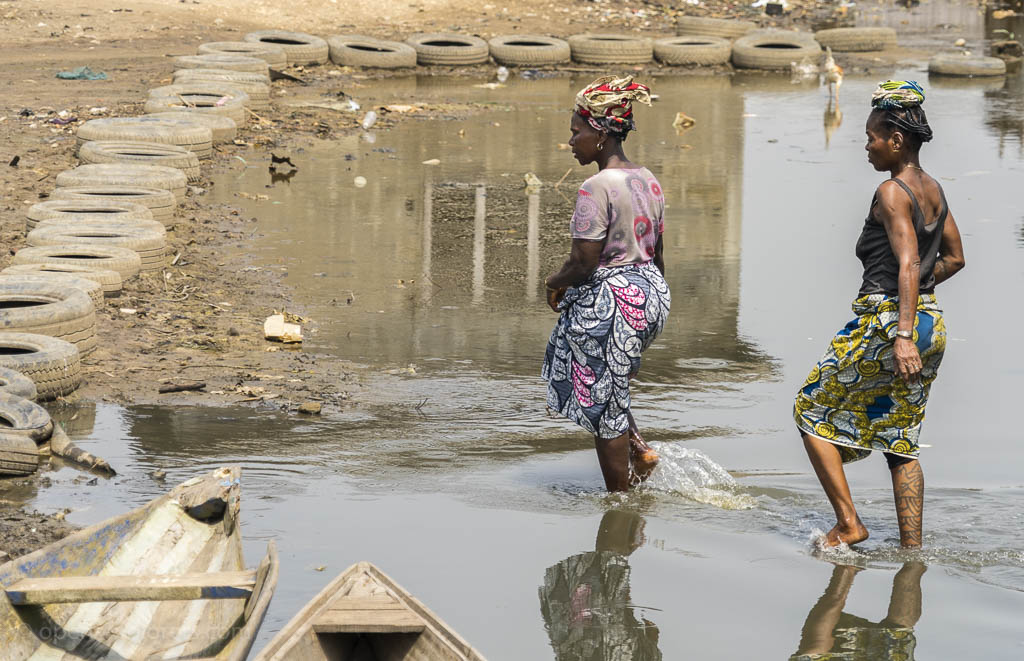
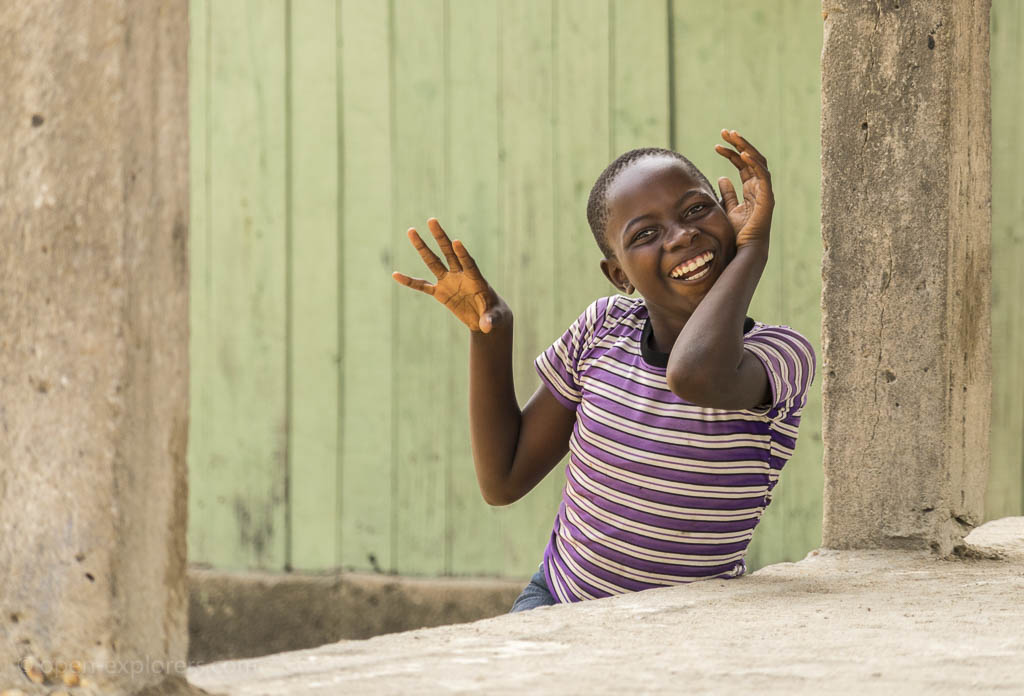

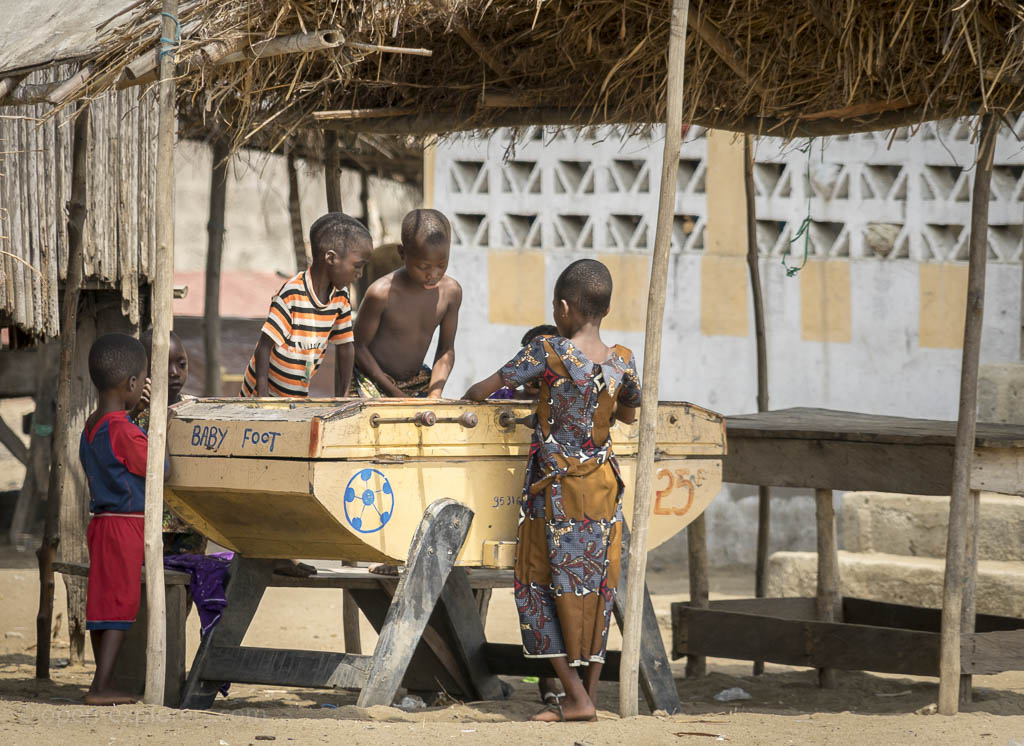
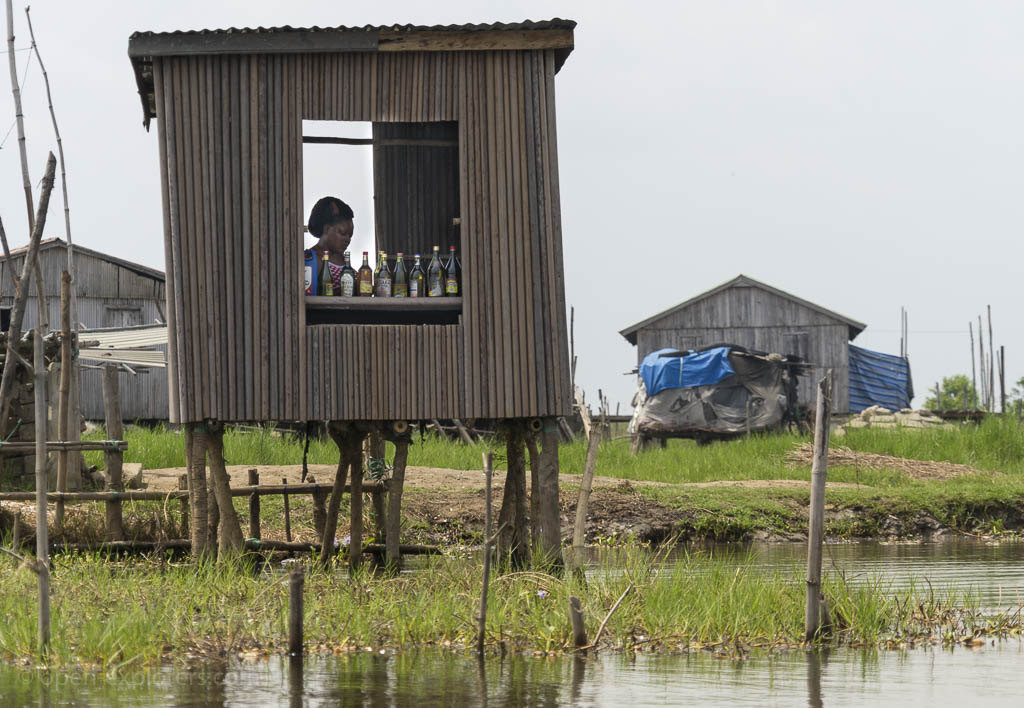
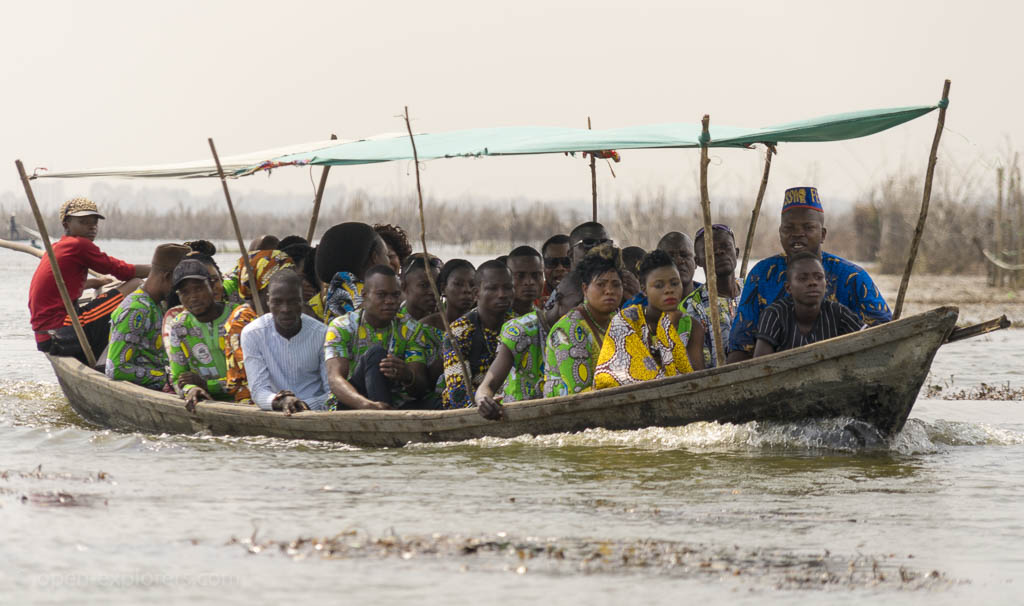
"Sô-Tchanhoue Xwe" happend to hold the anual festivities to celebrate the new year this first febuary weekend. Hundreds or even thousands of people, among them many visitors from neighboring countries, gathered on one of the islands to join the party. And most of them were dressed in cloth especially made for the occasion.
In "Sô-Tchanhoue Xwe" fand an diesem ersten Februarwochenende zufällig gerade die jährlichen Festivitäten zum Neujahr statt. Hunderte, wenn nicht sogar Tausende Teilnehmer, viele davon Besucher aus benachbarten Ländern, versammelten sich auf einer der Inseln zum Feiern. Der Großteil war in grüne Kleider gehült, deren Stoff extra für den Anlaß kreiert worden war.
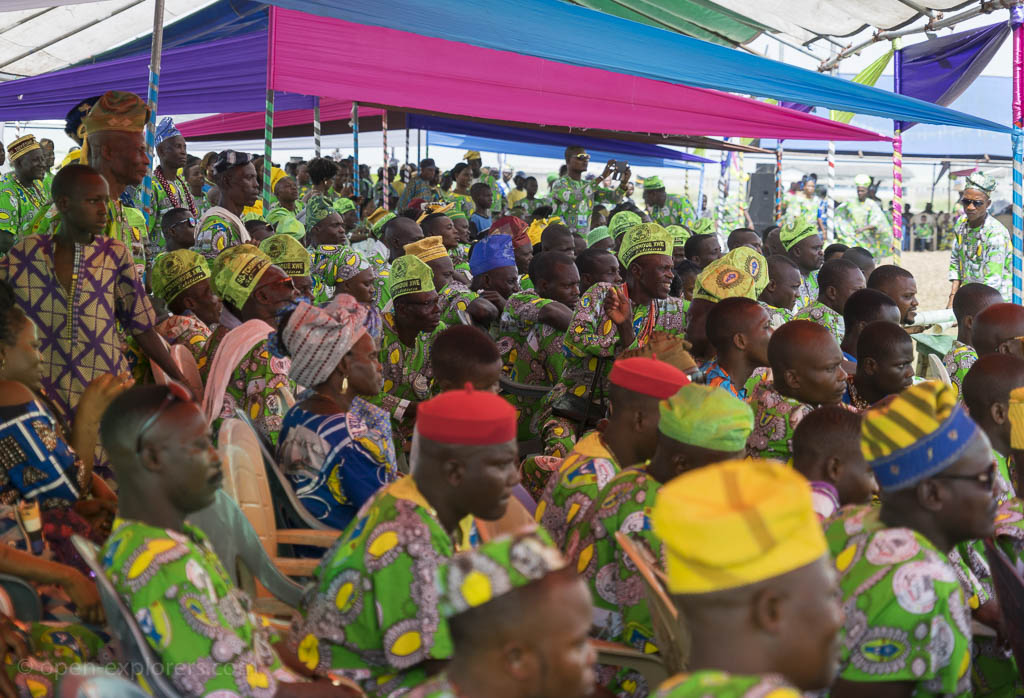
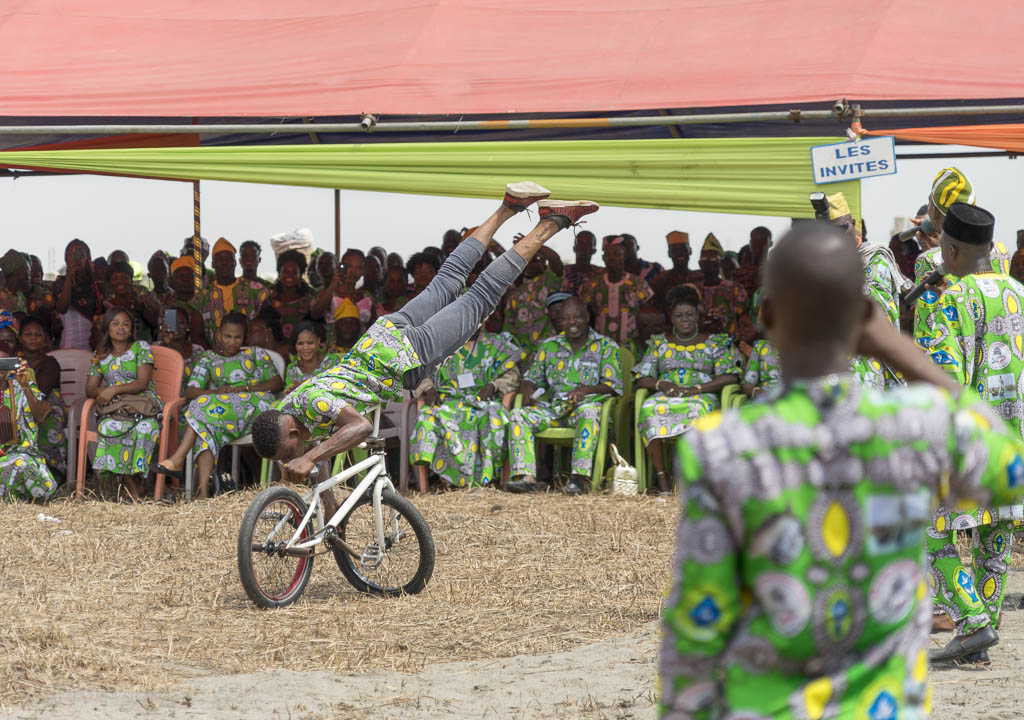
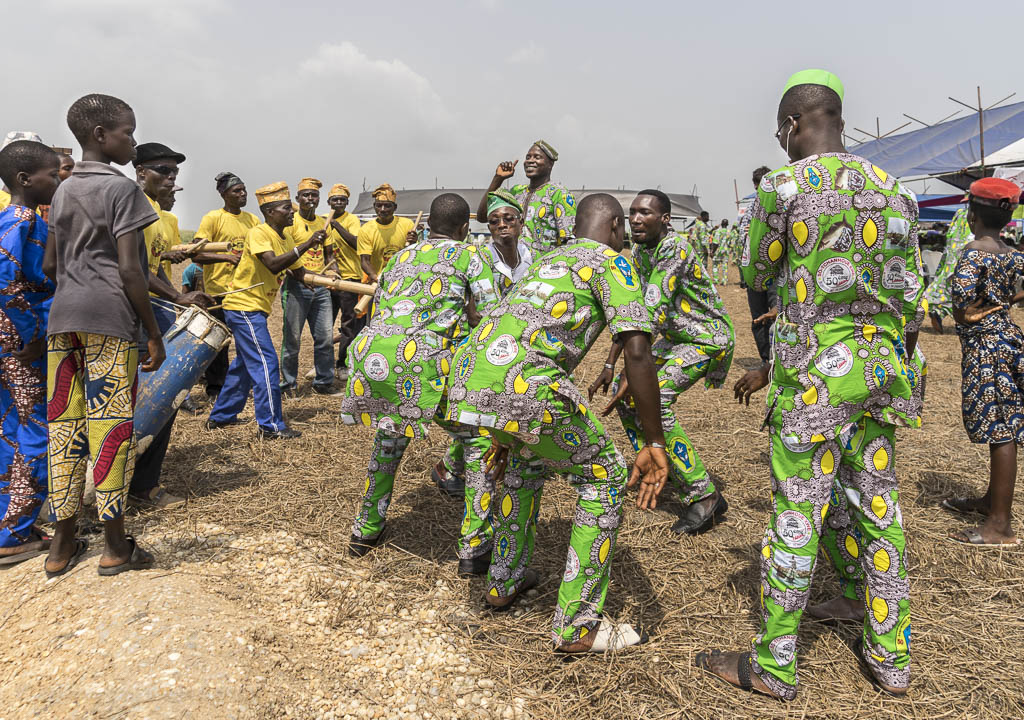
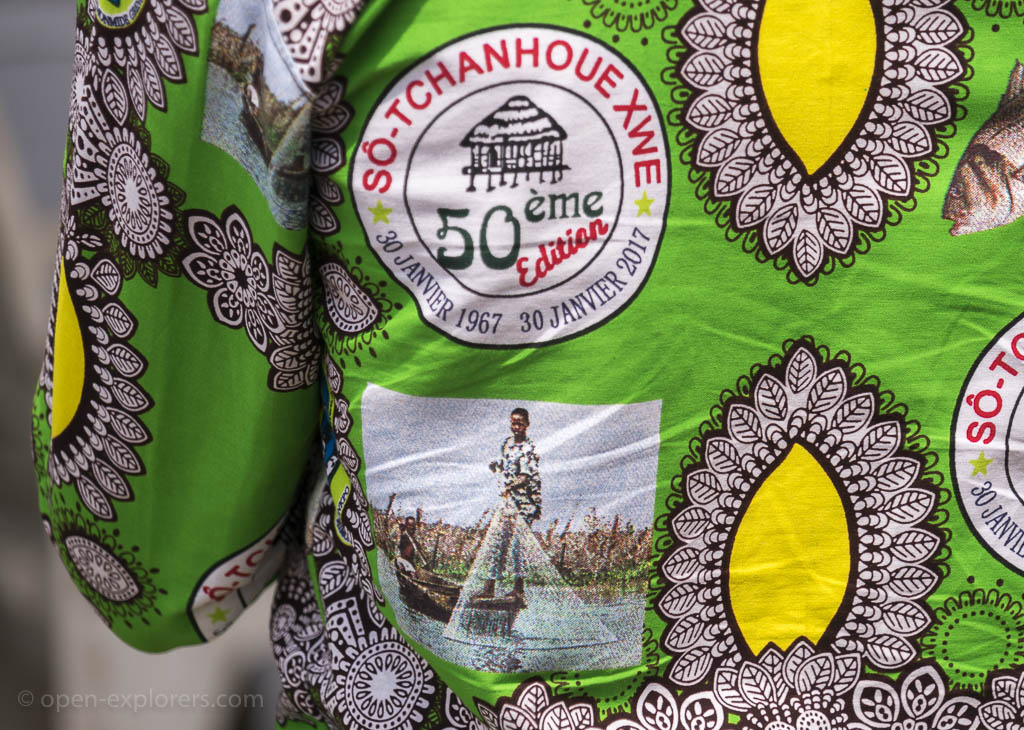
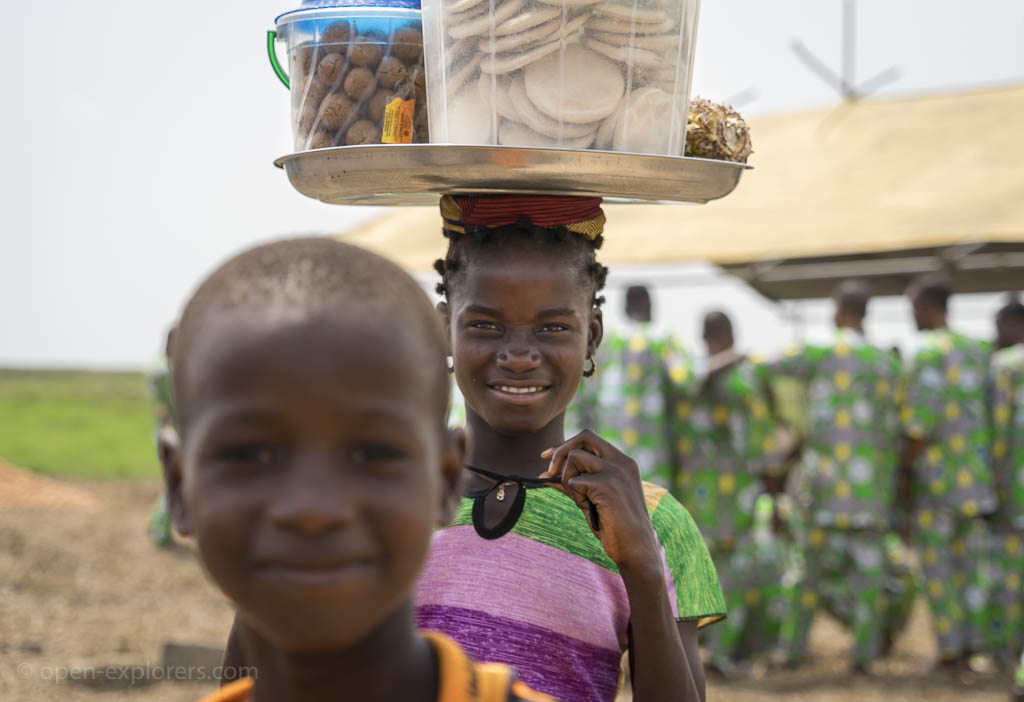

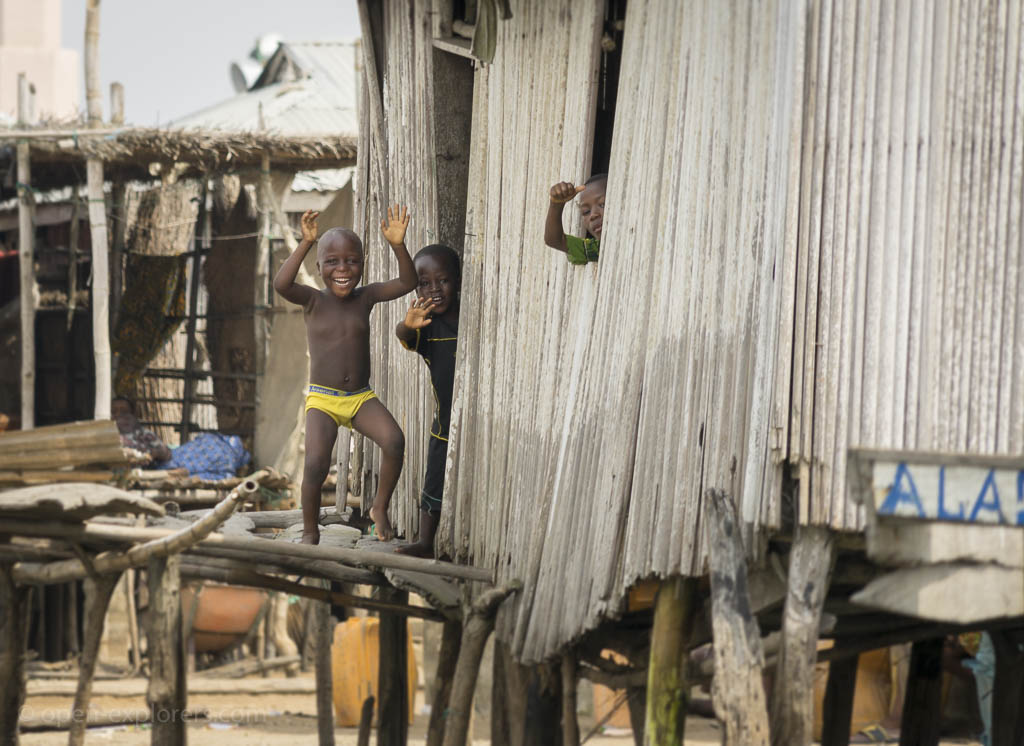
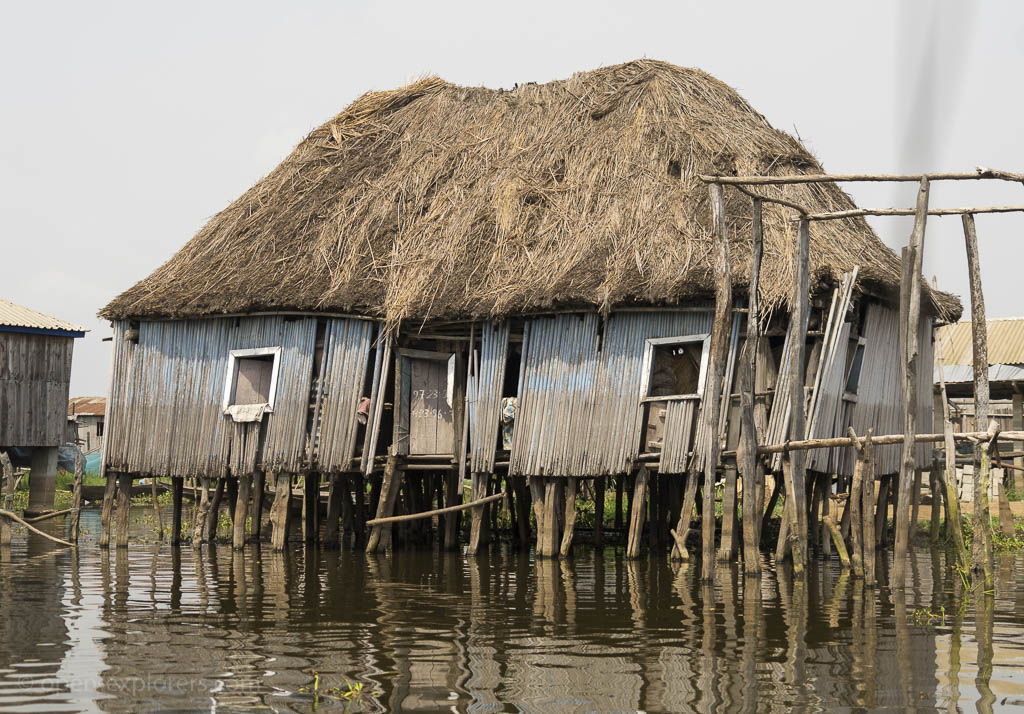
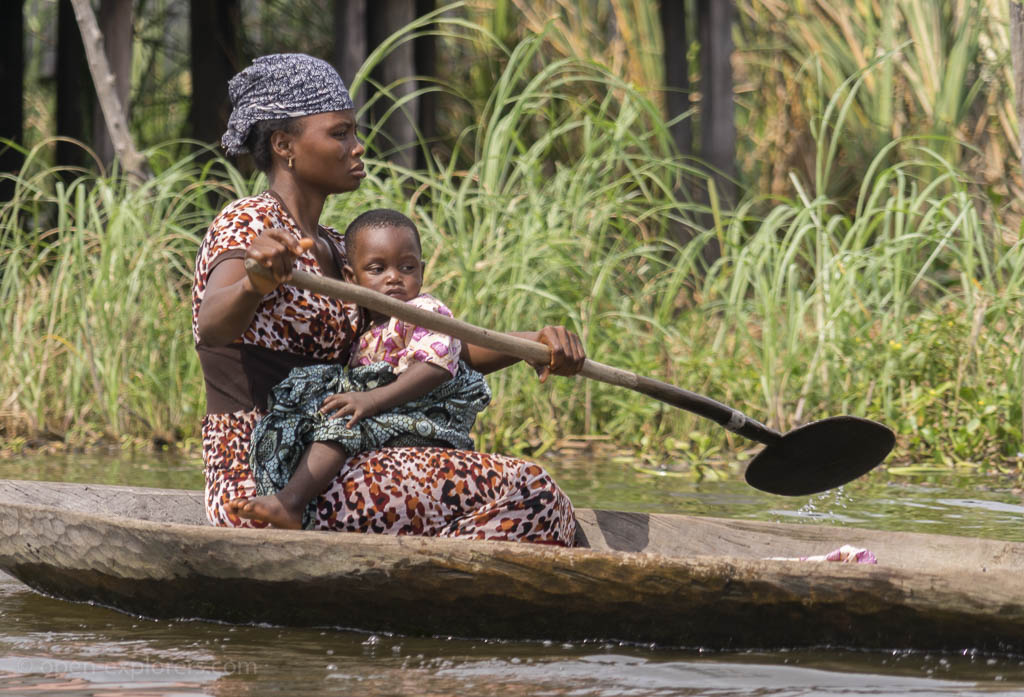
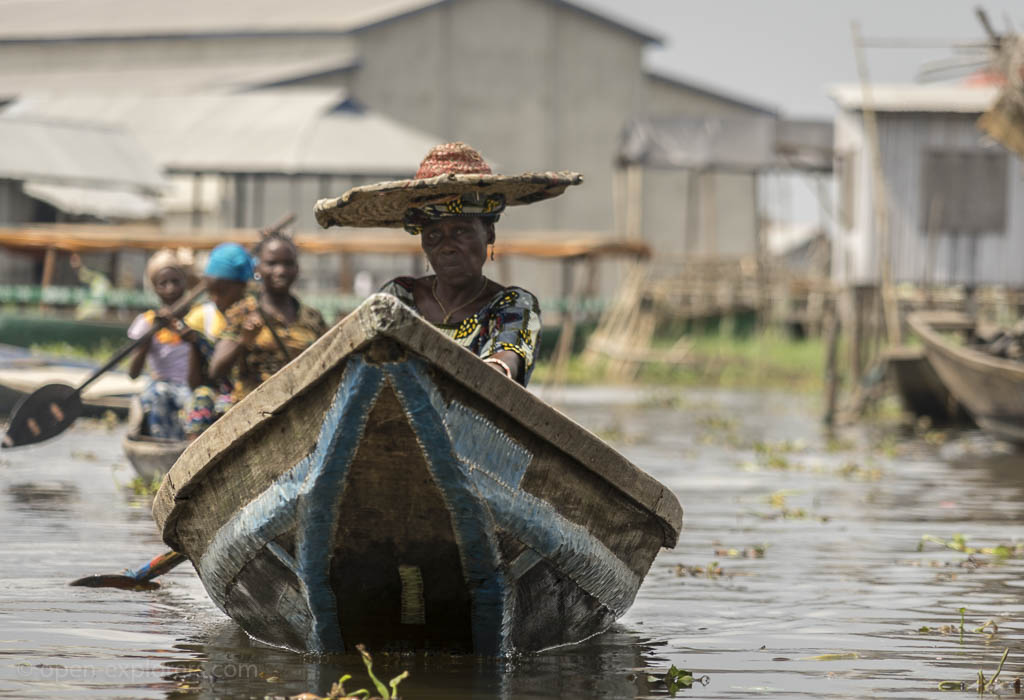
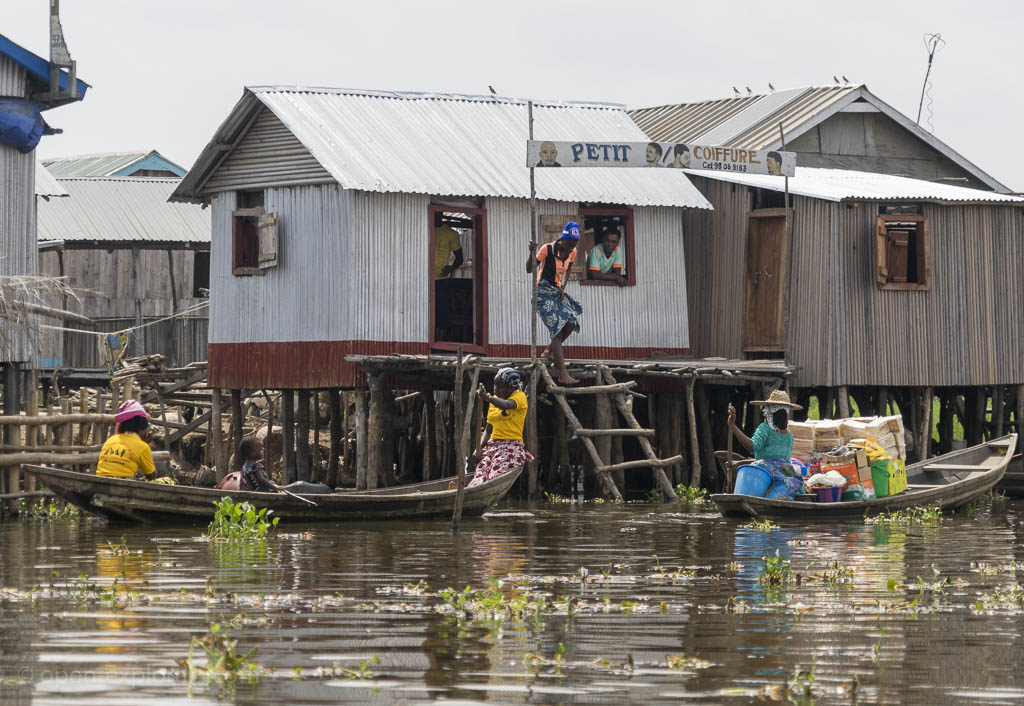
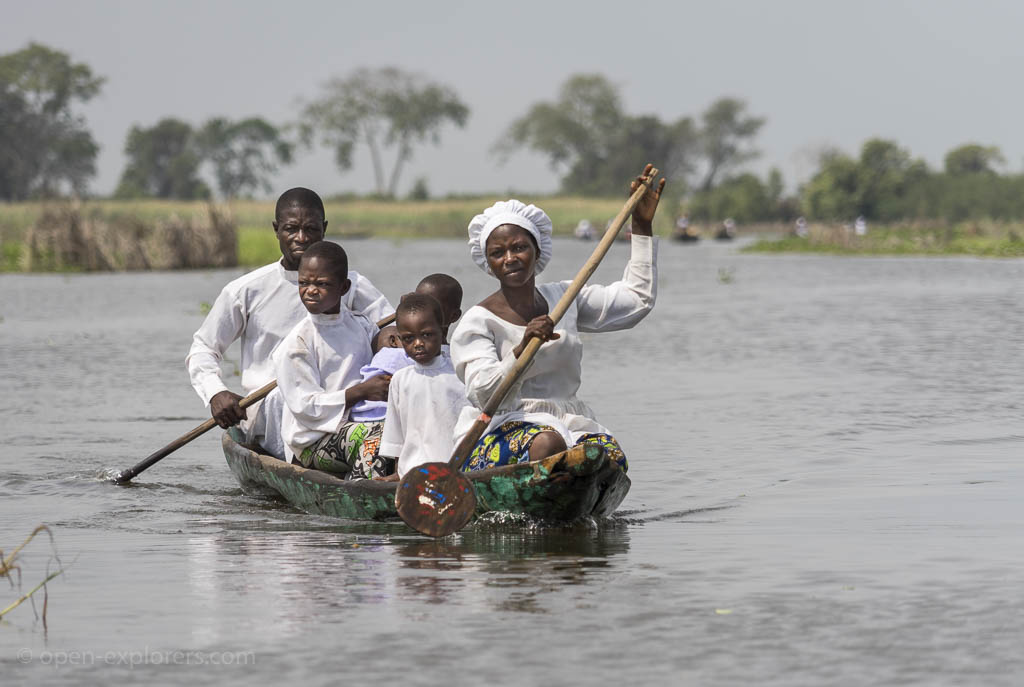
A family on their way to church. Santería is the name of the particular church/sect where everyone is dressed in white. Interestingly we have come across Santería followers frequently in Cuba. The religion developed in the Carribean among West African slaves and was transported back to Africa with returning former slaves or their descendants. It is a mix of african animist beliefs and christianity that was introduced by the Spanish colonialists.
Eine Familie auf dem Weg in die Kirche. Santería ist der Name der Kirche/Sekte, wo alle komplett in Weiß gekleidet sind. Interessanterweise sind wir auf Kuba häufiger auf Santería Anhänger gestoßen. Die Religion entwickelte sich unter den Westafrikanischen Sklaven in der Karibik und wurde mit Heimkehrenden nach Afrika gebracht. Es ist ein Mix aus afrikanischen animistischen Glaubenssystemen und des Christentums der spanischen Kolonialherren.
